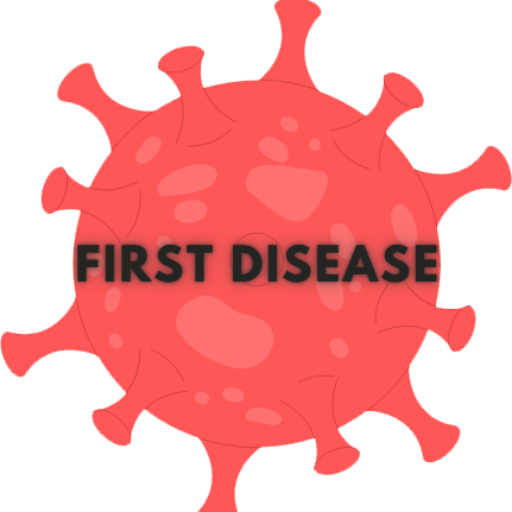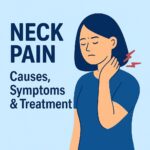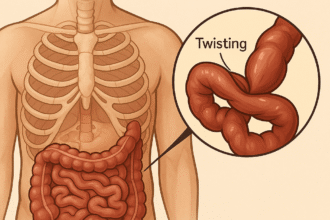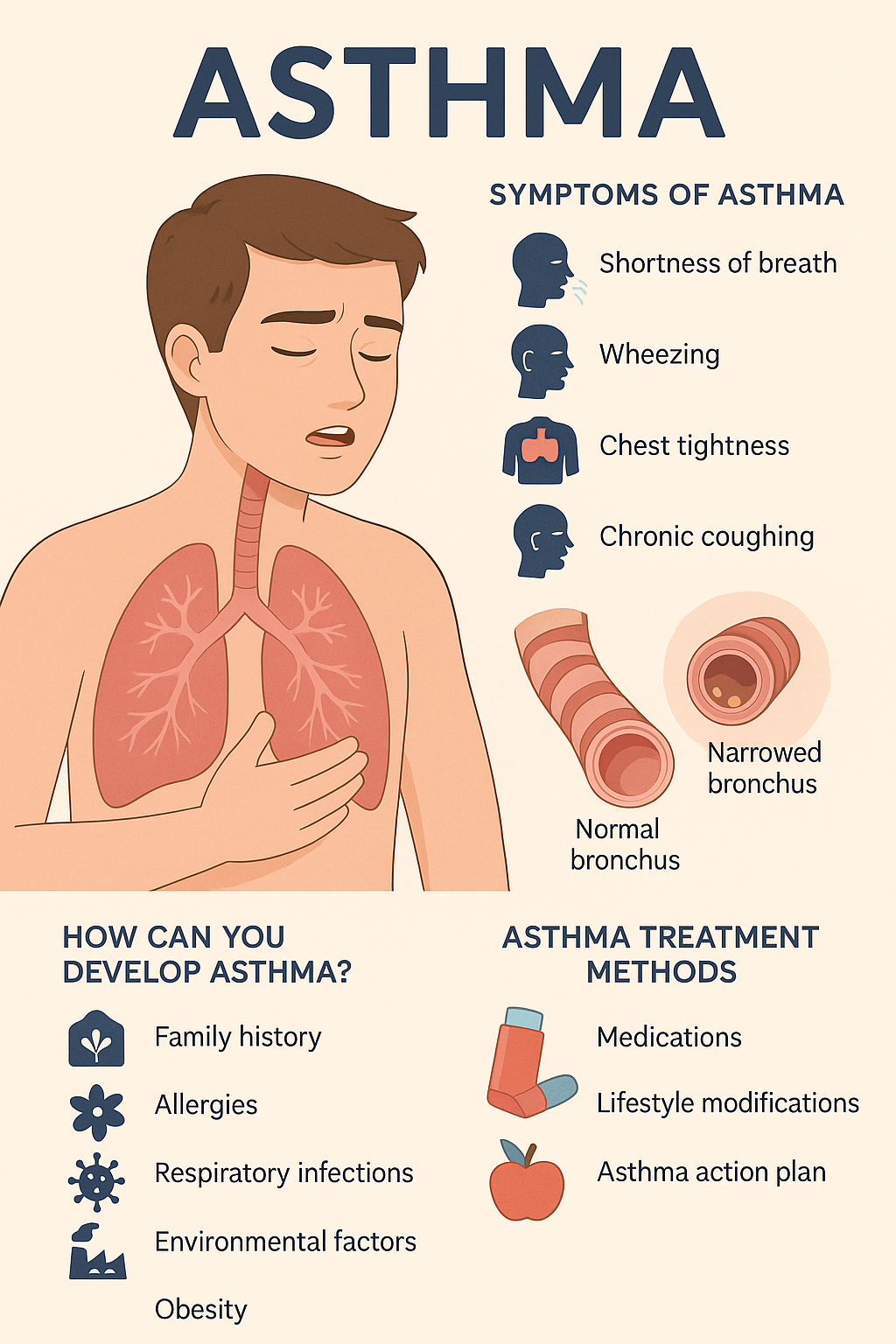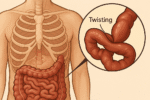1. General Overview (Diseases A-Z)
Short Summary:
Low back pain refers to discomfort in the area between the lower rib cage and the gluteal folds. It is one of the most common reasons for medical visits and can be caused by muscle strain, disc problems, or degenerative changes in the spine. It can be acute or chronic and may severely affect daily life.
What is this condition?
Low back pain is a common condition involving pain in the lumbar spine region. It may stem from muscles, ligaments, discs, joints, or nerves. It can be classified as acute (less than 6 weeks), subacute (6–12 weeks), or chronic (more than 12 weeks).
What are the symptoms?
-
Aching, stabbing, or burning pain in the lower back
-
Pain that worsens with bending, lifting, or prolonged sitting
-
Muscle stiffness and limited range of motion
-
Radiating pain to the buttocks or down the legs (sciatica)
-
Occasionally numbness or weakness in the legs
What causes it?
-
Muscle or ligament strain: sudden movements, poor lifting technique
-
Herniated or bulging discs
-
Degenerative disc disease
-
Spinal stenosis (narrowing of spinal canal)
-
Osteoarthritis
-
Spondylolisthesis (vertebra slipping over another)
-
Poor posture or prolonged sitting
-
Obesity
-
Stress and emotional factors
Who is more likely to experience it?
-
People with sedentary jobs
-
Individuals performing heavy lifting or repetitive bending
-
Middle-aged and older adults
-
Overweight or obese individuals
-
Pregnant women
-
Smokers
-
People with anxiety or depression
How is it diagnosed?
-
Medical history and physical examination
-
X-ray or MRI: to detect disc or bone problems
-
CT scan: detailed imaging of bone structures
-
Blood tests: if infection or inflammation is suspected
-
Electromyography (EMG): to assess nerve compression
What are the treatment options?
-
Short-term rest (not extended bed rest)
-
Physical therapy: stretching, strengthening exercises
-
Pain medications: NSAIDs, muscle relaxants
-
Heat and cold therapy
-
Manual therapy or spinal manipulation
-
Behavioral therapy (especially in chronic cases)
-
Epidural steroid injections (for severe inflammation)
-
Surgery: reserved for persistent cases with nerve involvement
Can it be prevented?
Yes. Preventive strategies include:
-
Maintaining a healthy weight
-
Strengthening abdominal and back muscles
-
Using ergonomic chairs and standing desks
-
Lifting objects with proper body mechanics
-
Avoiding smoking
-
Managing stress levels effectively
Is it contagious?
No. Low back pain is not an infectious condition. It is caused by mechanical, degenerative, or lifestyle-related factors.
2. Symptom Checker – Based on Symptom: Low Back Pain
❓ What diseases can cause this symptom?
-
Muscle strain or sprain
-
Herniated disc / slipped disc
-
Degenerative spine conditions
-
Sciatica (nerve root compression)
-
Spinal stenosis
-
Spondylitis or arthritis
-
Kidney infections or stones
-
Gynecologic issues (e.g., endometriosis)
-
Spinal tumors or infections (rare)
🧑⚕️ When should I see a doctor?
-
If pain persists longer than 4 weeks
-
If pain radiates to legs or causes weakness/numbness
-
If there is difficulty in urination or bowel movements
-
If pain is accompanied by fever or unexplained weight loss
-
If there’s a history of cancer or trauma
-
If night pain is severe or awakens you
🚨 Emergency or not?
Emergency Situations:
-
Loss of bladder or bowel control (cauda equina syndrome)
-
Sudden and severe leg weakness
-
High fever with back pain
-
Post-traumatic pain after a fall or accident
Non-Emergency (Can Wait):
-
Mild to moderate low back pain after physical activity
-
Muscle tightness due to bad posture or sitting too long

3. Age-Based Overview – Low Back Pain
👶 In Infants
-
Extremely rare. May indicate congenital spine problems (e.g., tethered cord)
-
Often with neurological signs
🧒 In Children
-
Poor posture, carrying heavy backpacks
-
Sports injuries
-
Infections or tumors (rare but should be ruled out if persistent)
🧑 In Adolescents
-
Growth-related spinal issues
-
Muscle imbalance during puberty
-
Incorrect sitting posture during long study hours
👨🦰 In Adults
-
Muscle strain and disc herniation are leading causes
-
Sedentary lifestyle and poor core strength
-
Psychosocial factors (e.g., stress, depression)
👵 In Elderly
-
Degenerative changes (e.g., osteoarthritis, spinal stenosis)
-
Osteoporosis and compression fractures
-
Limited mobility and muscle loss (sarcopenia)
